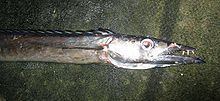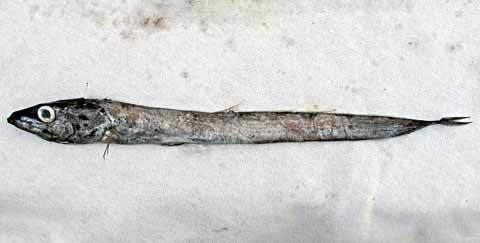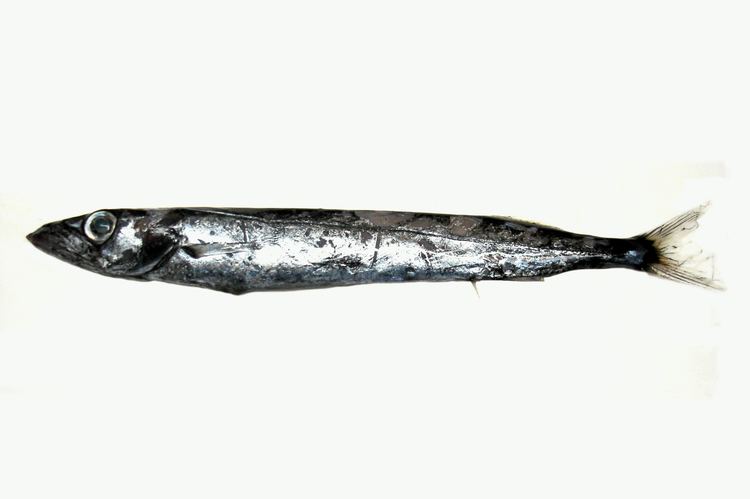Order Perciformes Scientific name Gempylus serpens Rank Species | Phylum Chordata Higher classification Gempylus | |
 | ||
Genus GempylusG. Cuvier, 1829 Similar Gempylidae, Oilfish, Nesiarchus nasutus, Lepidocybium, Promethichthys prometheus | ||
Rare species barracouta a k a snake mackerel on jig by gamaliel sonda
The snake mackerel (Gempylus serpens) is a species of fish in the monotypic genus Gempylus, belonging to the family Gempylidae (which is also referred to generally as "snake mackerels"). It is found worldwide in tropical and subtropical oceans between the latitudes of 42° N and 40° S; adults are known to stray into temperate waters. It is found to a depth of 600 meters (2,000 feet). Populations of the snake mackerel from the Atlantic and the Indo-Pacific differ in vertebral count (51–55 versus 48–50) and number of first dorsal fin spines (30–32 versus 26–30), and so may represent separate species.
Contents
- Rare species barracouta a k a snake mackerel on jig by gamaliel sonda
- Description
- Behaviour
- Human Interaction
- References
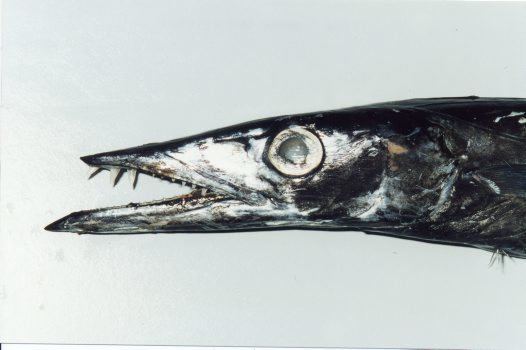
Description
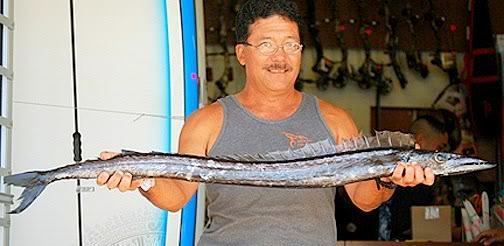
The snake mackerel has a very long, slender, laterally compressed body. It has a long, pointed head, measuring 17–18% of the standard length, and a large mouth with the lower jaw protruding beyond the upper. Both jaws are densely packed with sharp teeth; the first few teeth in the upper jaw are enlarged into fangs. The pectoral fins contain 12–15 rays; the pelvic fins are tiny and located beneath the pectorals, containing 1 small spine and 3–4 rays. There are two dorsal fins; the first is long and spiny, and is followed immediately by the second, which contains 1 tiny spine and 11–14 soft rays. The anal fin originates opposite the second dorsal fin and consists of 2 free spines followed by 1 spine and 10–12 rays. The dorsal and anal fins are followed by 6–7 finlets. There are two lateral lines, with the upper running to the rear of the first dorsal fin and the lower running to the caudal peduncle. The scales are mostly absent. The coloration is metallic brown, with dark fins. This species grows to 1 meter (3.3 feet) in length.
Behaviour
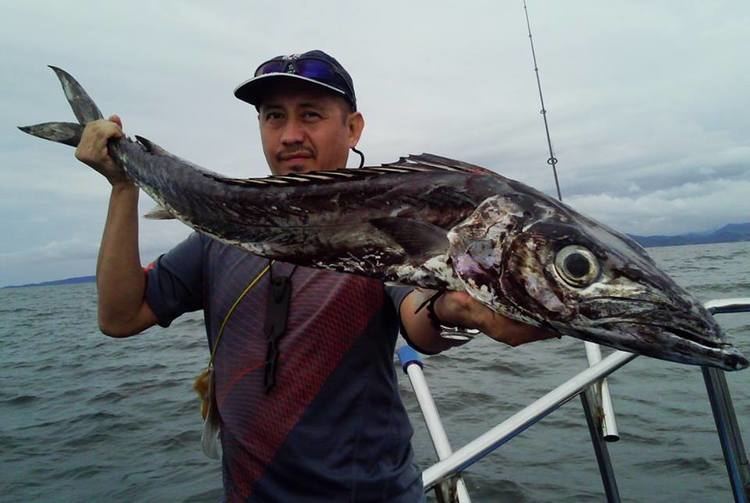
Adult snake mackerels conduct a diel vertical migration, staying in deeper water during the day and rising to the surface at night to feed. The young and juveniles also migrate vertically but in the opposite direction, staying near the surface during the day and moving deeper at night. This species feeds on squid, pelagic crustaceans, and bony fishes such as lanternfishes, flying fishes, sauries, and mackerel. It is in turn preyed upon by tuna and marlin. Reproduction is oviparous, with females producing 300,000 to 1,000,000 eggs. Spawning occurs year-round; spawning areas are known to exist in the Caribbean Sea and off the coast of Florida. Males reach sexual maturity at 43 cm (17 in) long and females at 50 cm (20 in) long. As the fish mature and move into deeper water where there is less available light, they lose the cone cells in their eyes in favor of rod cells.
Human Interaction

The snake mackerel is caught as bycatch in the tuna longline fishery and is of minor commercial importance. It is marketed frozen or in sausages and fish cakes. In Hawaii, this fish is known as hāuliuli and is considered good eating cooked or dried. King Kamehameha was apparently not fond of it, as he once remarked that it is a "delicious fish for the back country people", meaning fine for those who could not obtain anything better.
